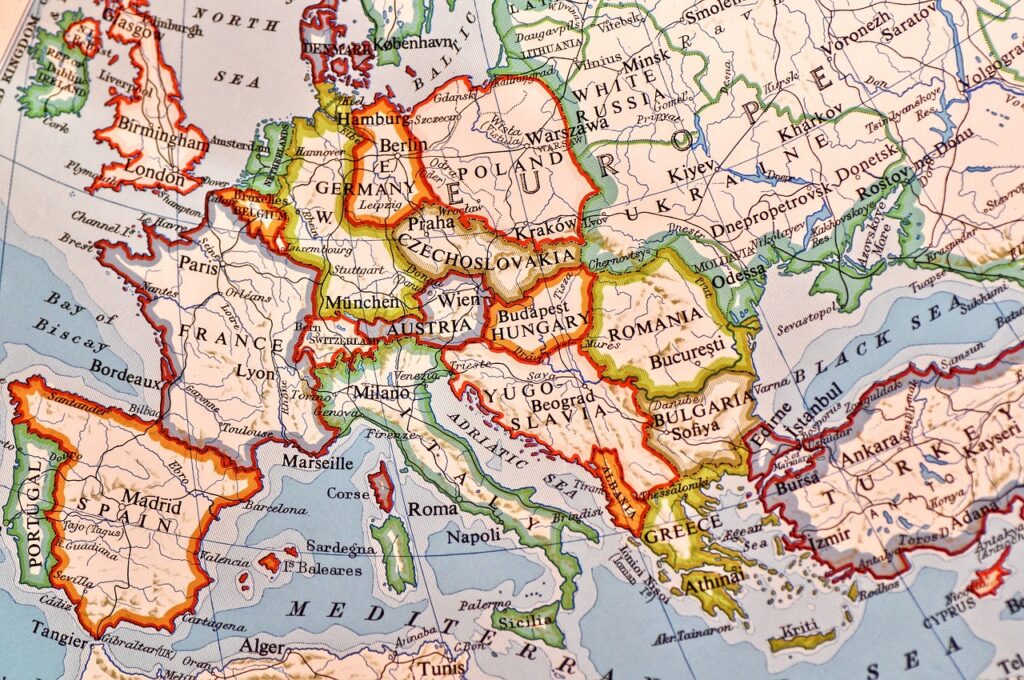Is Drangarnir Hike Worth it? An Objective Opinion
The Faroe Islands have gained a well-deserved reputation as a prime destination for hiking enthusiasts. Within their rugged landscapes, featuring dramatic cliffs, verdant valleys, and breathtaking fjords, a diverse array of hiking opportunities awaits. Notably, the Drangarnir hike stands out as a sought-after adventure among outdoor enthusiasts and adventurers alike. Drangarnir is a sea stack located on the island of Vágar in the Faroe Islands. The term “sea stack” refers to a geological wonder characterized by a vertical rock column that erosion has set apart from the mainland or adjacent cliffs. What sets Drangarnir apart, as you may already be aware, is its extraordinary appearance. It consists of two separate sea stacks, one larger and one smaller, with a distinctive arched opening connecting them. Obviously, this captivating arch formation makes Drangarnir a popular subject for photography and a notable landmark in the Faroe Islands. However, does the journey to reach this captivating destination truly justify the effort? To answer this, let’s delve into its various attributes such as difficulty level, cost, and the intrinsic beauty it unveils. Navigating the Challenge: Is Drangarnir Hike Difficult? The level of difficulty associated with the Drangarnir hike seems to be moderately challenging but rewarding. The hike covers approximately 12 kilometers and offers a mix of rugged terrain and narrow paths along the coastline. The trail includes narrow paths, hugging the cliffs for several kilometers. For some, especially those who experience a fear of heights, the hike can prove demanding, featuring steep sections that challenge the bounds of endurance. The trail’s intensity is exacerbated by the likelihood of encountering wet and muddy terrain, especially during seasons other than summer. Also, the trail can be particularly testing in adverse weather conditions, such as fog and rain, which might obscure the vistas along the way However, for seasoned hikers, the Drangarnir hike is well within their capabilities, especially under favorable weather conditions. Actually, even beginners can pull off the Drangarnir hike, although we can’t stress enough the need for caution, preparation, and adherence to safety guidelines. Is the Hike to Drangarnir Free or Paid? During the Drangarnir hike, the presence of a guide ensures an added layer of safety. In fact, acquiring the services of a guide has become a mandatory requirement. Embarking on a guided tour to Drangarnir comes with a cost of 600 Danish kroner per person, as of the time of writing this post. This regulation was implemented in 2019, stemming from a range of reasons. Instances of reckless behavior by hikers, coupled with a lack of reverence for the local ecosystem and its wildlife, played a significant role in this decision. Furthermore, the surge in tourism to the area prompted consideration for the well-being of the local community. By organizing guided tours, the community does gain a means of benefiting from increased tourism. 600 Danish kroner, though? That’s quite a substantial amount, isn’t it? Indeed, it is. So, let’s see whether the Drangarnir hike truly justifies this expense. The Beauty of the Drangarnir Hike Drawing from our personal experiences and discussions with numerous fellow hikers, it becomes clear that the trail to Drangarnir offers a formidable challenge while showcasing an unmatched display of nature’s splendor. Within this breathtaking beauty, one unmistakable highlight stands out: the majestic Drangarnir itself. It’s worth noting that, among the outdoor enthusiasts we’ve encountered, every individual who embarked on this trail has been touched by the captivating experience it delivers. Clearly, the allure of the Drangarnir hike extends beyond its physical demands. The trail to Drangarnir guarantees a profound encounter with nature’s magnificence that is sure to resonate deeply within. Nevertheless, the perspectives on whether the expense is warranted diverge. Some firmly maintain that such a substantial sum is unjustified for a hiking trail, standing on a matter of principle. On the other hand, proponents argue that the sheer magnificence of the encounter validates the cost. Ultimately, a conclusive response to the question of whether the expense is justified remains elusive. Is Drangarnir Hike Worth it? Conclusion Undoubtedly, embarking on the Drangarnir hike promises an enthralling and captivating experience. There’s no doubt about that. In the absence of the tour fee, the resounding answer to the query “Is the Drangarnir Hike Worth it?” would unequivocally be “Yes!” However, the decision of whether this hike holds value lies squarely in your hands, shaped by your own perspective on the associated cost. The pivotal question becomes whether this monetary outlay appears reasonable to you. Assessing the worth of the Drangarnir hike hinges on your individual financial standpoint. If your financial circumstances allow for this expenditure without causing hesitation, then by all means, seize the opportunity. The Faroe Islands, known for their captivating allure, are a destination that comes with the awareness that its beauty often comes at a price. If you are willing to allocate a bit more from your budget, even for the sake of hiking amidst nature’s grandeur, then venturing on the tour to Drangarnir undoubtedly holds its worth. However, it’s undeniable that for those who harbor reservations about the tour fee, alternatives exist. The world presents an array of equally exhilarating trails that entice exploration without imposing a monetary burden. Ultimately, the decision to embark on the Drangarnir hike hinges on your ability to find a balance between your admiration for its distinctive grandeur and your financial deliberations.
Is Drangarnir Hike Worth it? An Objective Opinion Read More »









